How to grow garlic – a complete guide to planting this delicious kitchen staple
Here's how to grow garlic in five simple steps
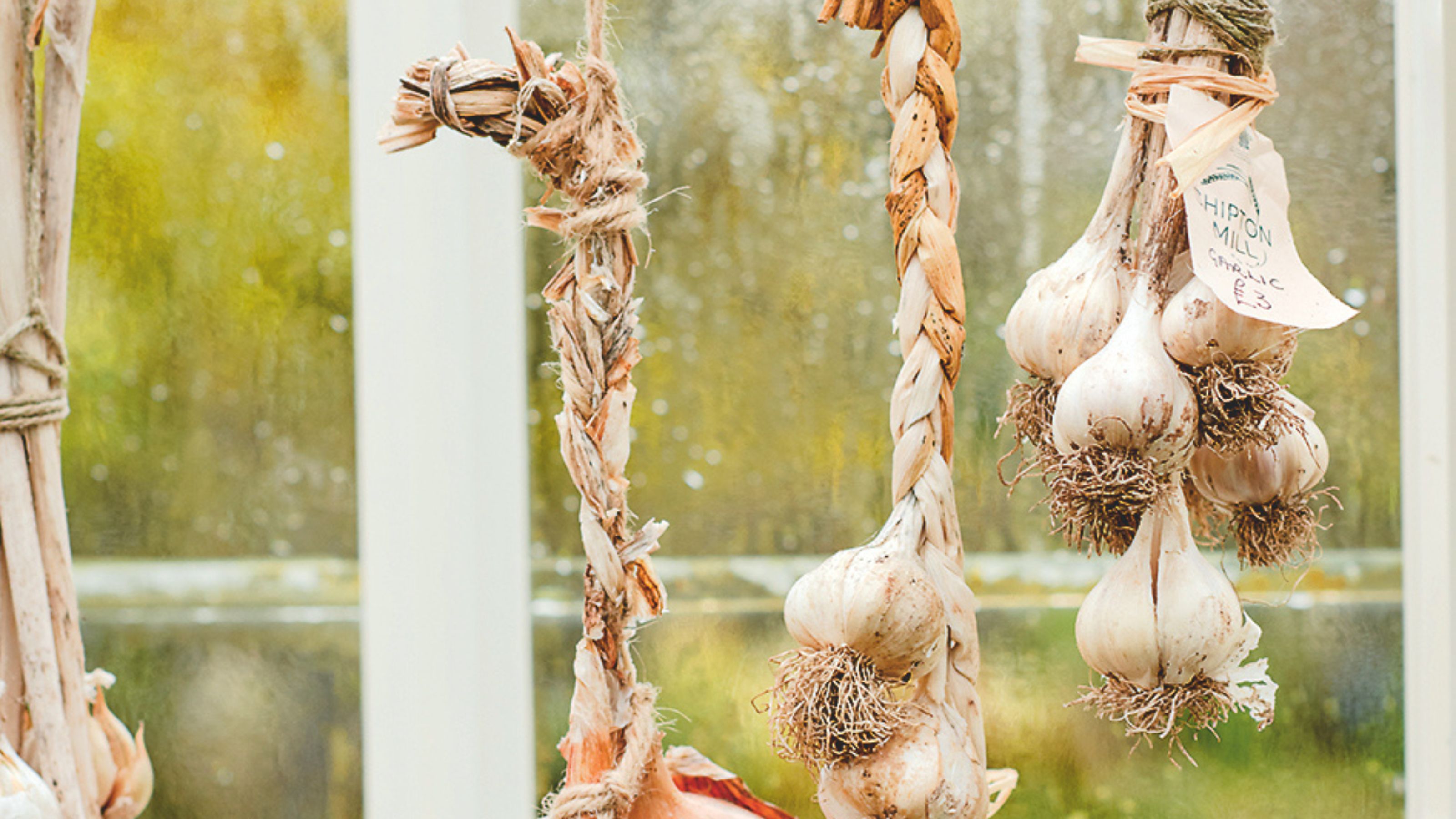

Sophie King
Garlic is a staple in the kitchen, which means it's an invaluable addition to the vegetable garden. Better yet? Learning how to grow garlic is easy.
If you've been wondering when to plant garlic, you're in the right season: autumn is the perfect time to get the cloves in the ground, because garlic is one of many vegetables that grow in winter. In fact, a cold snap is just what it needs to get started.
'Garlic is one of the easiest vegetables to grow,' says Chi Chi Dunford, head kitchen gardener at Dorchester's Sculpture by the Lakes. 'It isn't fussy about its growing condition and you can grow it anywhere if there’s no potential of your garden becoming waterlogged in the winter.'
We've pulled together a guide on how to grow garlic to help you get the best out of every bulb.
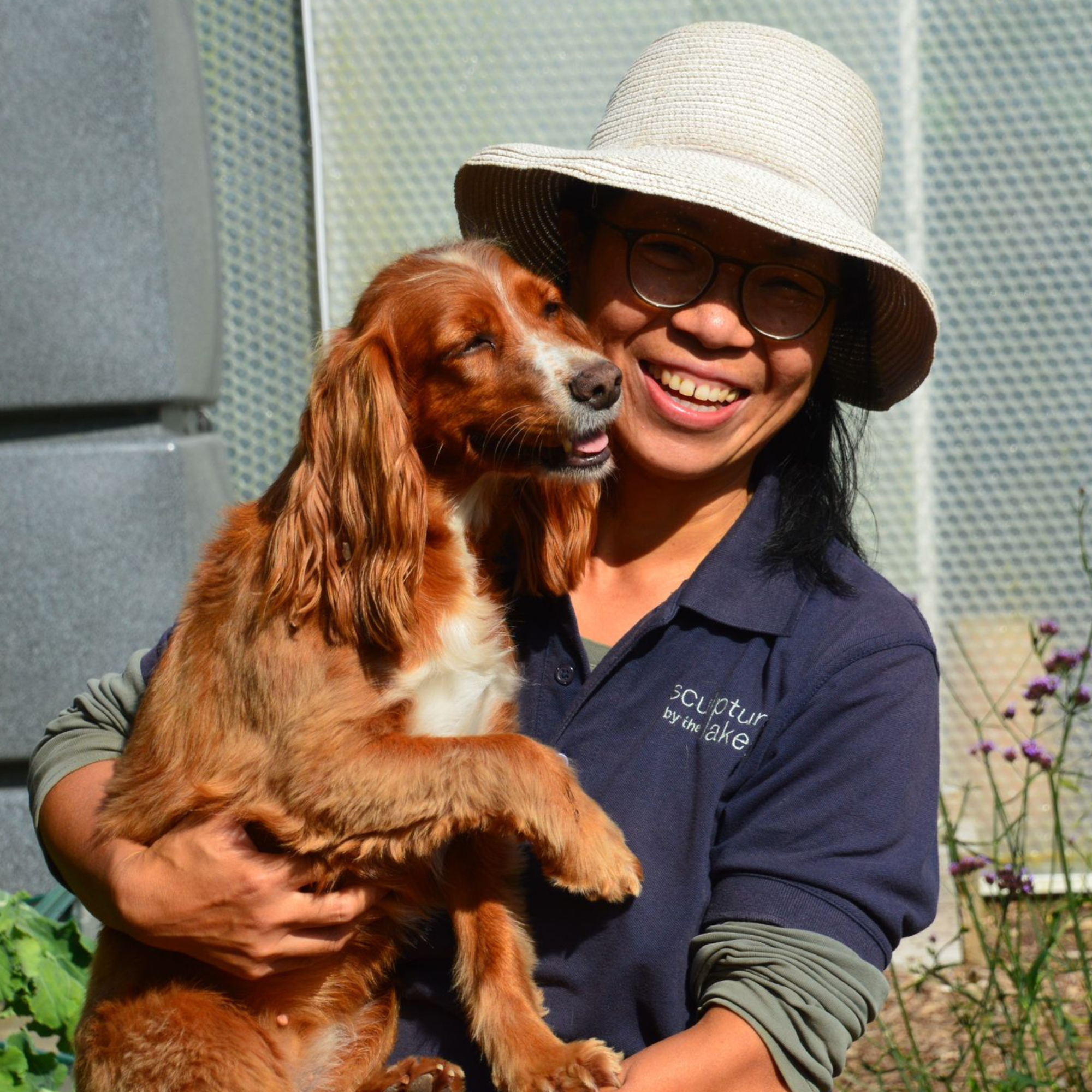
Chi Chi Dunford is the head kitchen gardener at Dorchester’s Sculpture by the Lakes, an internationally accredited botanic garden. Chi Chi joined the team in 2022 and manages the park’s quarter-acre allotment, growing fresh, seasonal produce which is used in the on-site café – the Makers Yard Kitchen. Chi Chi has a bachelor’s degree in forestry and resource conservation from National Taiwan University. She was also trained as a biodynamic gardener in 2008 and is currently taking an RHS level 3 diploma.
How to grow garlic
Garlic is grown from (surprise!) cloves, and it's best to plant them before Christmas if you want to harvest yours in time for delicious summer cooking.
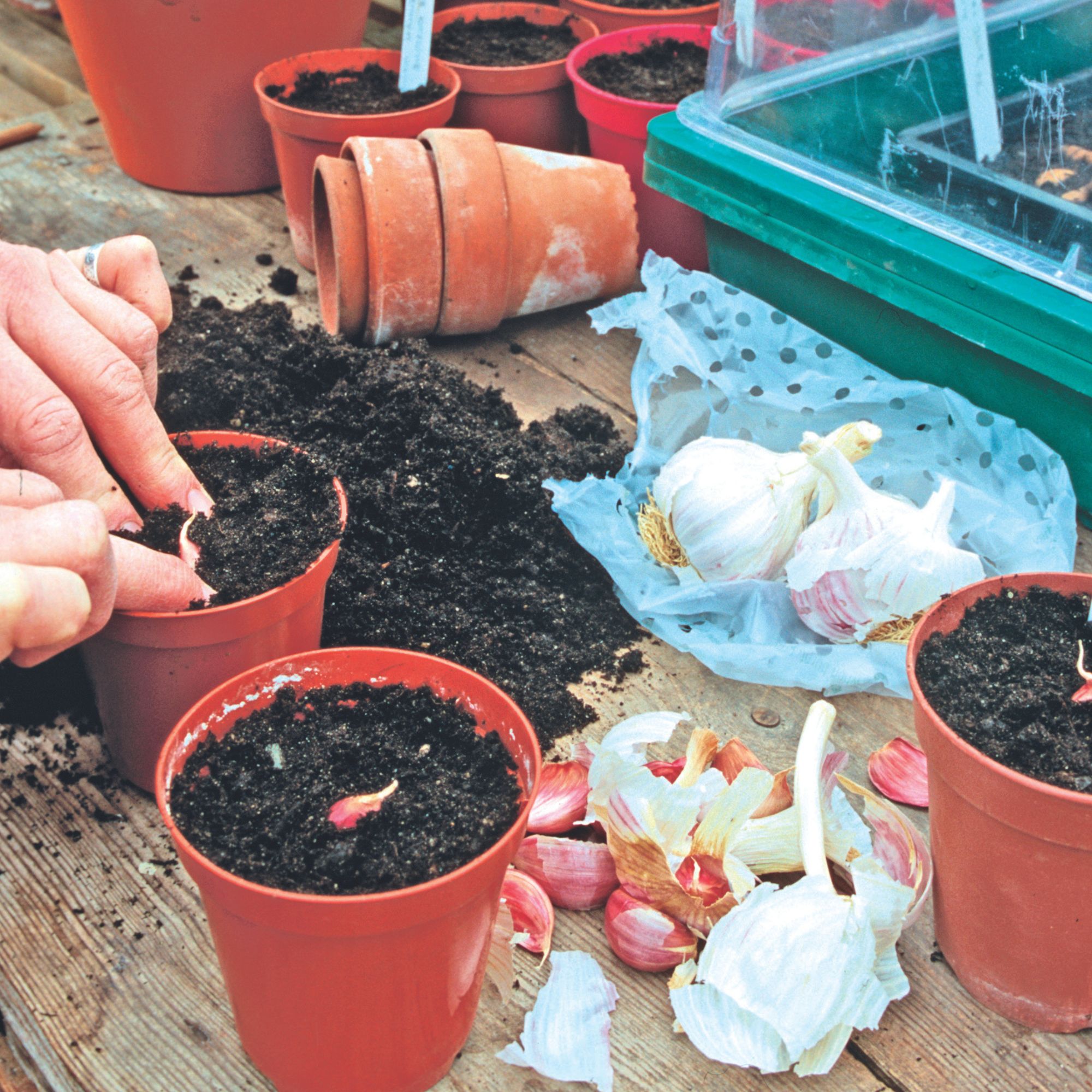
Now, while the when is important, we understand that you're here to learn how to grow garlic. And, thankfully, we've consulted some gardening experts (and pored over Monty Don's advice, of course) to bring you the ultimate how-to guide.
What you'll need
Garlic is one of our very favourite edimentals, and you'll need very little to grow your own.
Get the Ideal Home Newsletter
Sign up to our newsletter for style and decor inspiration, house makeovers, project advice and more.
Still, it's a good idea to get some horticultural fleece from Amazon, some well-rotted organic matter, and a high-potassium general fertiliser (such as Vitax Q4 from Amazon).
You'll also need, of course, to buy some garlic sets.
'A single garlic clove will grow a whole bulb, so it's a great value-for-money crop,' says Kate Cotterill, co-founder of She Grows Veg.
Where to buy garlic sets:
- Thompson & Morgan: Plant Garlic (Autumn) 'Kingsland Wight' for intense flavour
- Suttons: Try the ever-popular Garlic 'Solent Wight' for autumn and spring planting
- Amazon: Choose from a wide variety of garlic bulbs
How-to guide
It's incredibly easy to learn how to grow garlic.
Here are the steps you need to follow...
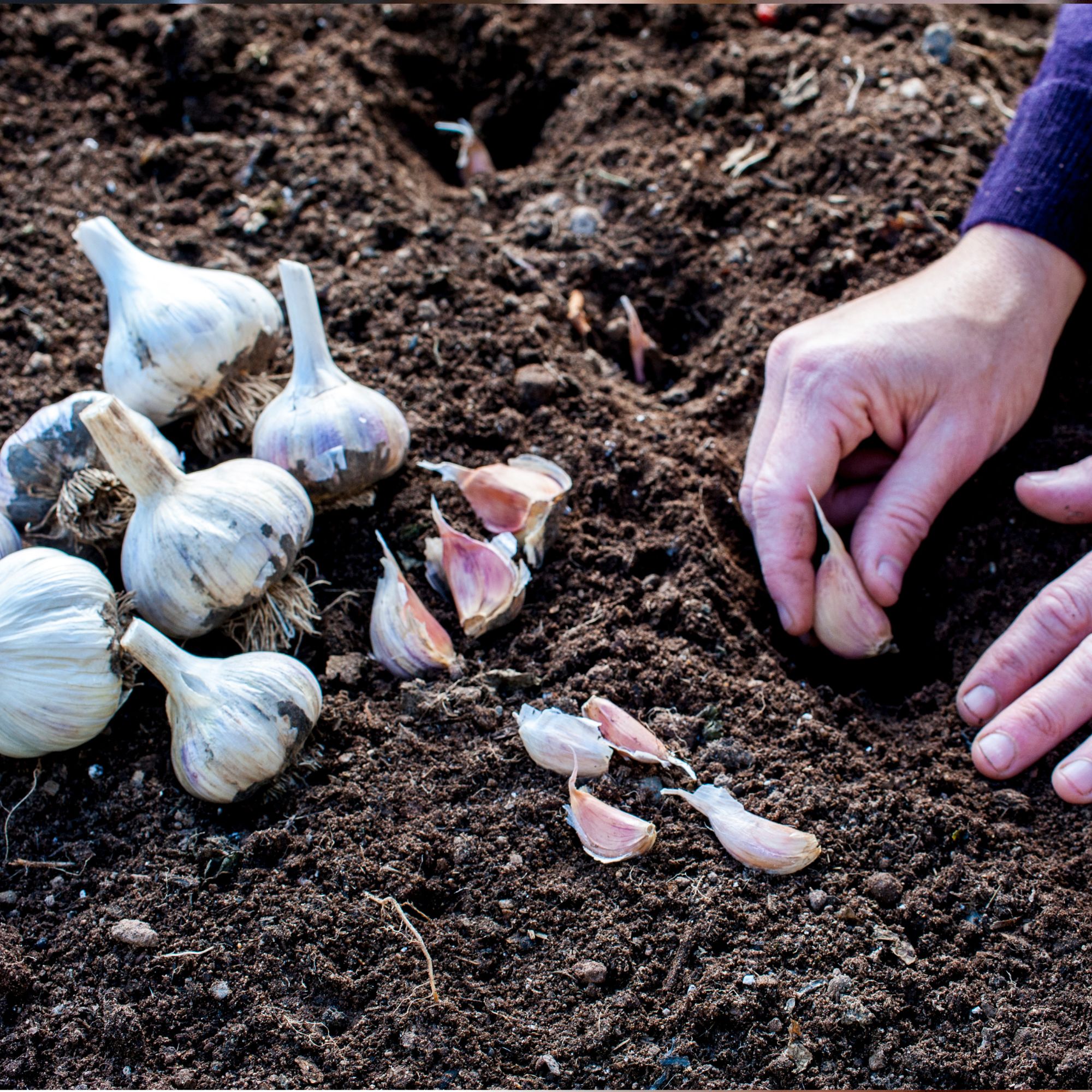
1. Prepare the soil
If you want to learn how to grow garlic like a gardening pro, preparation is key.
'Find a sunny spot with well-draining soil, and weed the area thoroughly,' advises Christopher O'Donoghue, co-director of Gardens Revived.
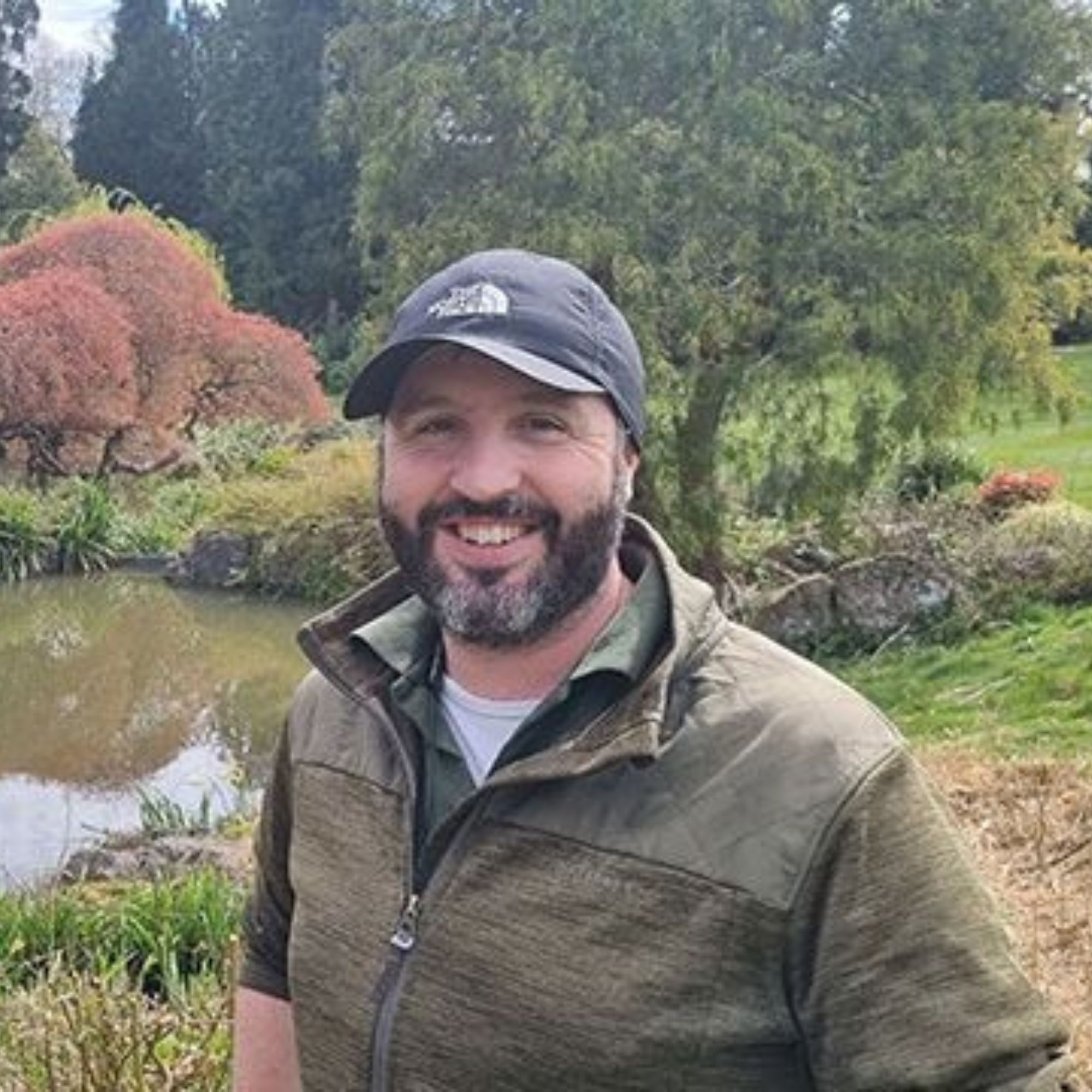
A gardener with over a decade of experience under his belt, Christopher set up Gardens Revived with his brother, Andrew, in 2018 to create a thriving family business. Together, they have worked on residential gardens, listed buildings and gardens, flower shows and large estates with some exceeding 70 acres – many with historical significance.
You can give your garlic bulbs the very best start in life by boosting the quality of the soil before planting.
Try mixing in a good peat-free compost or plenty of well-rotted organic material, or apply a high-potassium general fertiliser. This is even easier if you're learning how to grow garlic in pots.
Above all else, though, ensure that the soil isn't too heavy or prone to waterlogging. Garlic doesn't like soggy feet, so if the ground is very wet, you're best starting your bulbs off in a cold frame or unheated greenhouse before planting them out in the spring.
To do this, fill a modular tray with peat-free compost, insert one clove into each module, pop it in a cool location, and keep the compost moist but not wet. Then, wait for them to shoot!
2. Space them out
Monty Don is considered to be something of a gardening guru by many, and the horticulturalist has shared some of his own secrets for growing garlic – the most important of which is to give them enough space.
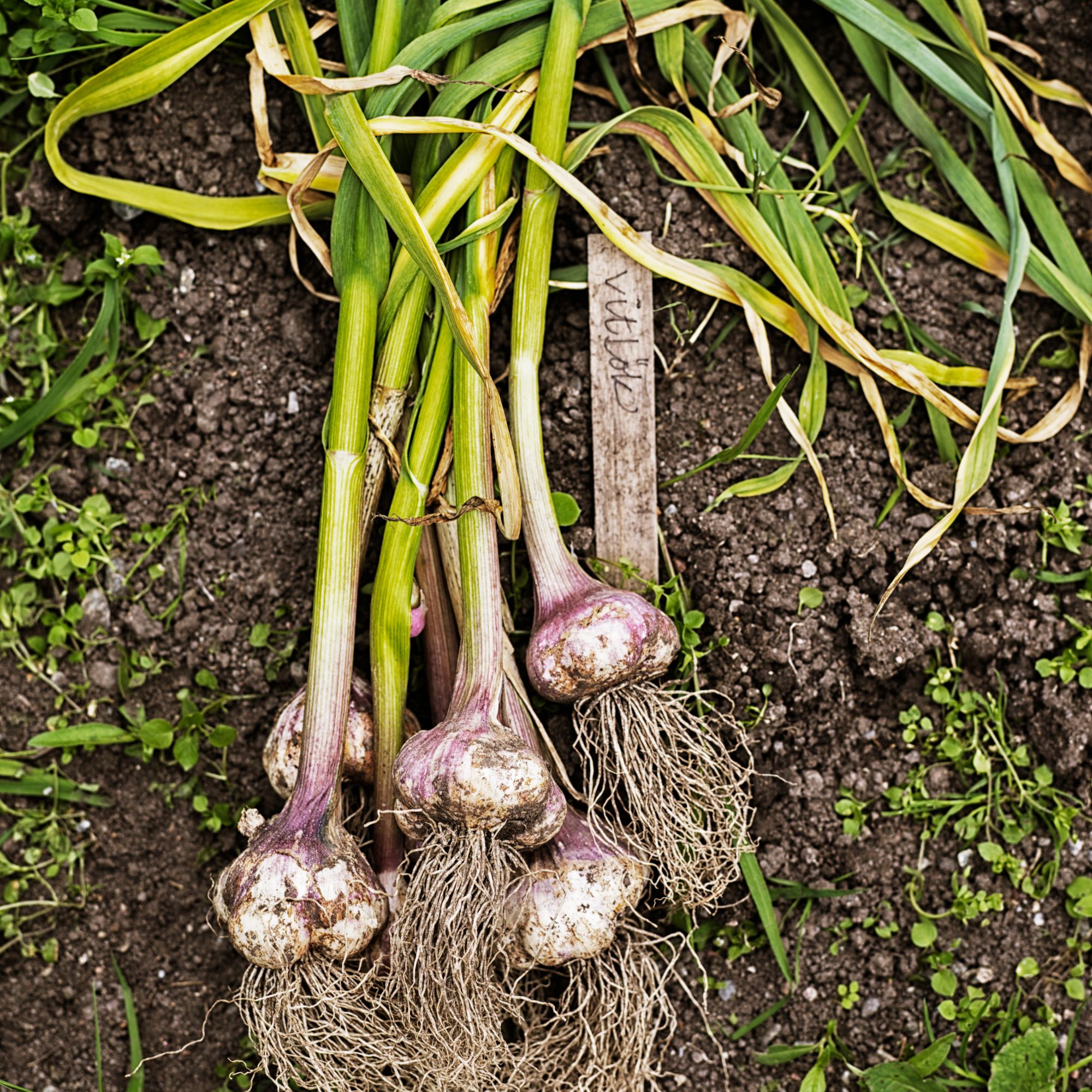
'Plant plump individual cloves (the bigger the clove the bigger the bulb it will generate) 6-9 inches apart, pointed end up and buried a good inch below the surface in well-drained soil,' he advises via his popular gardening blog.
Chi Chi offers similar guidance. 'For the best results, plant each garlic clove into a 5cm deep hole and cover it with soil,' she says. 'Make sure that each bulb is at least 10cm apart and 30cm across in each row.'
3. Give them some TLC
An important thing to remember when learning how to grow garlic is that while these are very low-maintenance plants, they still need a little bit of love and care in the early stages to protect them from hungry beaks.
'Water them moderately after planting and cover them with horticultural fleece until they're well-rooted in,' says Christopher. 'Otherwise, you may find that the birds in your local area have a suspiciously garlicky breath.'
Other than that, garlic is frost-hardy and doesn't need winter protection. Actually, exposure to the cold is exactly what it needs. 'Garlic needs a few days under zero degrees for differentiation of bulbs into cloves,' explains Chi Chi.
It's also important to keep the area free of weeds, but make sure you weed by hand so you don't damage your precious garlic bulbs.
4. Get picky with it
Patience is a virtue when learning how to grow garlic: Monty Don says shoots won't appear for six to eight weeks after planting.
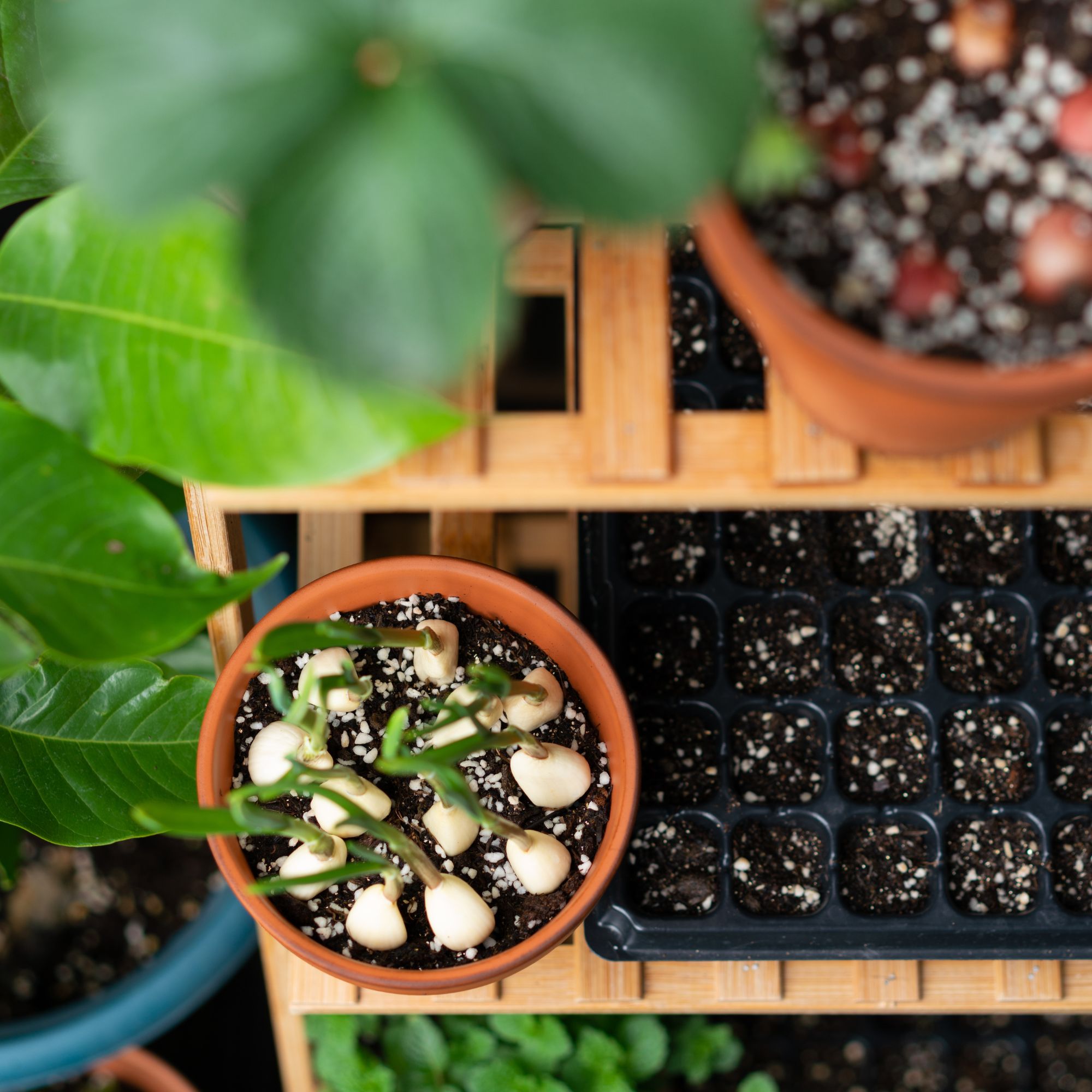
It's important to keep your garlic's energy focused on its root system and swelling the bulb, so Christopher advises that you remove any flower stems as soon as they start to form.
In fact, harvesting the scapes is a great way to make use of the whole plant.
'I love harvesting garlic scapes, which are the flower shoots on a garlic plant,' says Kate from She Grows Veg. 'They start to appear in late spring, and you can cut them off the plant while young without affecting the growth of your garlic. They're delicious stir-fried as a side dish.'
5. Harvest time
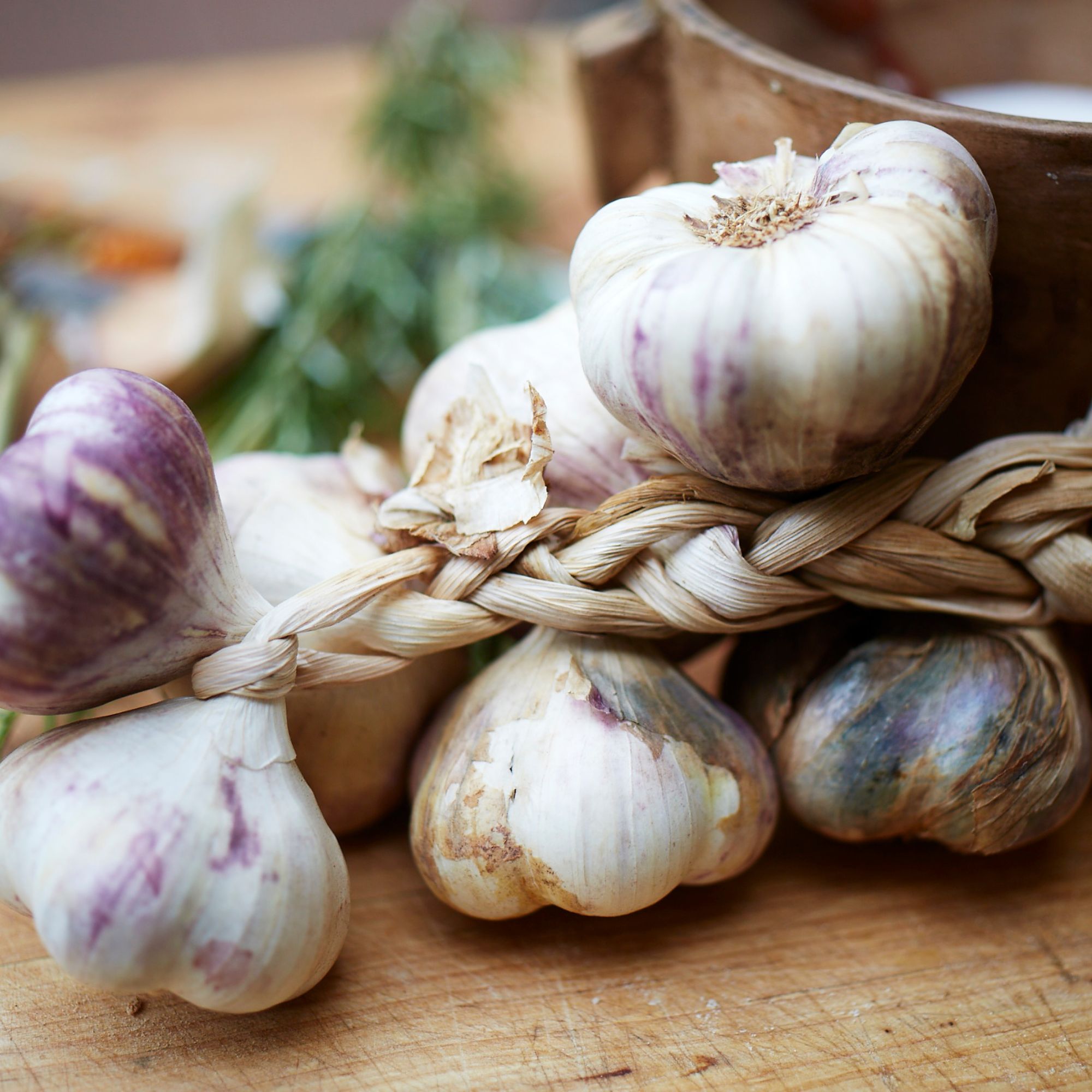
Now, the fun part: harvesting.
'Garlic bulbs are ready to harvest once the leaves have turned yellow and started to wilt,' says Christopher.
Carefully dig the bulbs out with a fork and enjoy them fresh, or dry them out. You could even pickle them if that's your preference. Yum!
FAQs
Do you grow garlic from a clove?
Yes! Garlic for planting is bought as a set, which basically means a bulb that you break into cloves. These are planted individually, meaning you get plenty of bang for your buck.
If you're wondering whether you can grow garlic from cloves bought from the supermarket, though, the RHS advises against it, warning that they could be infected with a virus and lead to a disappointing crop.
What can you not plant next to garlic?
Using the right companion planting ideas can reward you with healthier and tastier crops, but there are some garden plants that should never be grown together.
Garlic can stunt the growth of peas, beans and asparagus if they're planted too close together, for example. That's why many gardeners avoid planting them next to each other.
Now that you've learned how to grow garlic, the next thing to do is come up with a bevy of new recipes that'll help you use up your crop come harvest time.

Kayleigh Dray became Ideal Home’s Acting Content Editor in the spring of 2023, and is very excited to get to work. She joins the team after a decade-long career working as a journalist and editor across a number of leading lifestyle brands, both in-house and as a freelancer.
- Sophie KingGardens Editor
-
 Wood drenching is the calming new twist on the colour drenching trend – here’s how to make the look work in your home
Wood drenching is the calming new twist on the colour drenching trend – here’s how to make the look work in your homeIt’s easier than ever to embrace natural materials
By Maddie Balcombe
-
 Aldi is launching a £200 day bed with four different features - its sleek design is suited to the whole family
Aldi is launching a £200 day bed with four different features - its sleek design is suited to the whole familyYou don't want to miss out on this Specialbuy
By Kezia Reynolds
-
 How to set up a drip watering system that saves water and a lot of effort
How to set up a drip watering system that saves water and a lot of effortKeep your plants hydrated (and your water bill down) with this clever garden watering solution
By Natalie Osborn